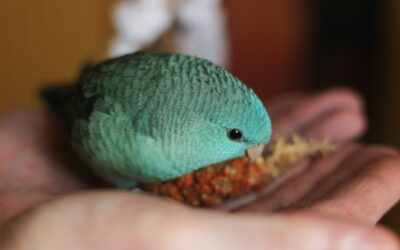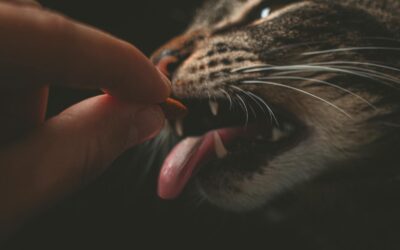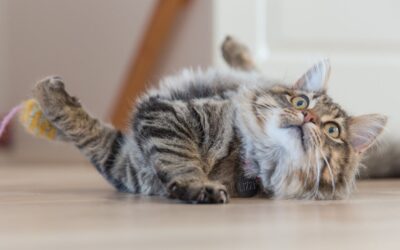If you’ve ever had a cat hop onto your lap while enjoying a delicious chocolate treat, you may have wondered, “Can cats eat chocolate?” It’s a common question among pet owners, and the answer is crucial for the health of our feline friends.
In this blog post, we’ll explore the effects of chocolate on cats, the symptoms of chocolate poisoning, and what to do if your cat accidentally eats chocolate. Whether you’re a seasoned cat owner or a new pet parent, understanding the risks of chocolate ingestion is essential for keeping your cat safe.

Understanding Chocolate and Its Toxicity
Chocolate is a delightful treat that many humans enjoy, but it’s important to remember that what’s tasty for us may not be safe for pets. Chocolate contains toxic compounds that are highly toxic to cats and dogs.
These compounds, known as theobromine and caffeine, can cause serious health issues in cats. Unlike humans, most animals, including cats, cannot metabolize these substances effectively, leading to potential toxicity. Even small amounts of chocolate consumed by cats can be dangerous, making it crucial for pet owners to be cautious.

Why is Chocolate Bad for Cats?
The main reason chocolate is bad for cats lies in the plant alkaloid called theobromine. Theobromine is present in all types of chocolate, including milk chocolate, dark chocolate, and baking chocolate. While humans can tolerate theobromine, cats’ bodies process it more slowly, allowing dangerous levels to build up in their systems.
Additionally, caffeine, another compound found in chocolate, can further increase the risk of toxicity. Chocolate ingestion can lead to symptoms such as increased heart rate, restlessness, and even seizures in severe cases.

Types of Chocolate and Their Dangers
Different types of chocolate contain varying amounts of theobromine and caffeine, affecting their toxicity levels. Dark chocolate and baking chocolate have the highest concentrations of these compounds, making them the most dangerous for cats, but that doesn’t mean that cocoa powder or white chocolate is not dangerous to your feline friends.
Milk chocolate, while still harmful, contains lower levels of theobromine and caffeine. White chocolate, on the other hand, has negligible amounts of these substances, but it’s still not advisable for cats to consume any chocolate-flavored foods or treats including chocolate ice cream.
Dark Chocolate
Dark chocolate is especially hazardous for cats due to its high theobromine content. Consuming even a small piece can lead to severe symptoms of chocolate poisoning in cats. Pet owners should be extra cautious about keeping dark chocolate out of reach from their feline companions.
Milk Chocolate
Milk chocolate contains less theobromine than dark chocolate, but it’s still dangerous for cats. A cat ate chocolate in the form of milk chocolate may experience mild to moderate symptoms of chocolate toxicity.
Baking Chocolate
Baking chocolate, often used in cooking and baking, has the highest concentration of theobromine. If a cat eats even a tiny amount of baking chocolate, it can result in severe chocolate poisoning, requiring immediate veterinary attention.

Symptoms of Chocolate Poisoning in Cats
If your cat ate chocolate, it’s crucial to recognize the symptoms of chocolate poisoning. Early detection can make a significant difference in the outcome. Symptoms of chocolate toxicity in cats can vary depending on the amount of chocolate consumed and the type of chocolate ingested. Some common signs to watch for include:
Gastrointestinal Distress
One of the first symptoms that may appear is gastrointestinal distress. Cats may experience vomiting, diarrhea, and increased thirst. These symptoms can occur within a few hours of chocolate ingestion. The vet may be able to induce vomiting to help prevent your cats body from absorbing too many toxins.
Restlessness and Rapid Breathing
Cats experiencing chocolate toxicity often become restless and may exhibit rapid breathing. This is due to the stimulating effects of theobromine and caffeine on the cat’s body.
Increased Heart Rate and Tremors
A cat’s heart rate may increase significantly after consuming chocolate. In severe cases, this can lead to tremors or even seizures. If you notice these symptoms, seek veterinary care immediately.

What to Do If Your Cat Eats Chocolate
If you suspect your cat has eaten chocolate, it’s essential to act quickly to minimize the risk of serious health issues. Here are some steps to take:
Assess the Situation
Determine how much chocolate your cat has consumed and the type of chocolate ingested. This information will help your veterinarian assess the severity of the situation.
Contact Your Veterinarian
Call your veterinarian as soon as possible. They can provide guidance on whether you should bring your cat in for an evaluation and treatment. In some cases, they may recommend inducing vomiting to remove the chocolate from the cat’s stomach.
Monitor Your Cat’s Condition
While waiting for veterinary advice, keep a close eye on your cat’s condition. Note any changes in behavior or symptoms that develop. This information will be valuable for your veterinarian to make an accurate diagnosis.

Preventing Chocolate Ingestion in Cats
Prevention is the best approach to keeping your cat safe from chocolate poisoning. Here are some tips to prevent your cat from eating chocolate:
Store Chocolate Safely
Always store chocolate products in a secure place that your cat cannot access. Consider using airtight containers or placing chocolate in high cabinets.
Educate Family Members
Make sure everyone in your household is aware of the dangers of chocolate to cats. Encourage family members to avoid leaving chocolate unattended where a curious cat might find it.
Provide Alternative Treats
Offer your cat safe and healthy treats designed specifically for feline consumption. There are many cat-friendly treats available that your furry friend will love.

Common Myths About Cats and Chocolate
There are several myths surrounding cats and chocolate that can lead to misunderstandings. Let’s debunk some of these myths:
Myth 1: A Small Amount of Chocolate is Safe
Even a small amount of chocolate can be dangerous for cats, especially if it’s dark or baking chocolate. It’s best to err on the side of caution and avoid giving your cat any chocolate.
Myth 2: White Chocolate is Harmless
While white chocolate has minimal theobromine, it can still pose a risk to cats. Additionally, it’s high in sugar and fat, which are unhealthy for feline consumption.
Myth 3: Cats Won’t Eat Things That Are Bad for Them
Cats are naturally curious creatures and may be tempted to taste foods that are harmful. Never assume your cat won’t try to eat something just because it’s bad for them.
Other Foods Toxic to Cats
Besides chocolate, there are several other foods that can be toxic to cats. Pet parents should be aware of these common household foods that could harm their feline friends:
Onions and Garlic
Onions and garlic, whether raw or cooked, can cause damage to a cat’s red blood cells, leading to anemia.
Grapes and Raisins
Grapes and raisins can cause kidney damage in cats, even in small amounts.
Alcohol
Alcohol is extremely dangerous for cats and can lead to severe poisoning, coma, or even death.

Safe Sweet Treat Alternatives for Cats
While it’s important to keep harmful foods like chocolate away from your cat, you can still treat your feline friend to delicious and safe snacks. Here are some sweet treat alternatives that your cat can enjoy:
Catnip-Infused Biscuits
These treats are made specifically for cats, offering a tempting taste with the added appeal of catnip. They can be a delightful and safe indulgence for your furry friend.
Malted Fish Treats
Rich in omega-3 fatty acids, malted fish treats provide a flavorful experience while supporting healthy skin and coat. These treats are often well-loved by cats.
Pumpkin-Flavored Cat Chews
Pumpkin is not only tasty but also beneficial for your cat’s digestive health. Pumpkin-flavored chews are a sweet and safe option to satisfy your cat’s sweet tooth.
Salmon Treats
Salmon treats are packed with protein and natural flavors that cats adore. These treats can be a healthy and satisfying alternative to sweet foods.
By choosing appropriate treats, you can safely spoil your cat while ensuring their diet remains healthy and balanced. Always introduce new treats in moderation and observe how your cat responds to them.

The Importance of Early Treatment
Early treatment is critical if your cat has consumed chocolate or any other toxic substance. The sooner your cat receives treatment, the better the chances of a full recovery. Always consult your veterinarian if you suspect your cat has ingested something harmful.
Caring for Your Cat’s Well-being
Caring for a cat involves more than just providing food and shelter. Understanding the risks of certain foods, like chocolate, is part of responsible pet ownership. Regular veterinary check-ups, a balanced diet, and a safe environment contribute to your cat’s well-being.
The Importance of Veterinary Consultations
Regular Check-Ups
Regular veterinary consultations ensure that your cat remains in optimal health. Routine check-ups can identify potential health issues early, including dietary concerns.
Open Communication with Your Vet
Maintain open communication with your vet, especially if you have questions about your cat’s diet or behavior. Your vet can provide tailored advice to suit your pet’s unique needs.
Building a Health Plan Tailored to Your Cat
Work with your veterinarian to develop a health plan that addresses your cat’s dietary and lifestyle requirements, ensuring a long and happy life.
Kate’s K9 Pet Care provides cat food and treat delivery that is safe for your kitty right from the pet store to your doorstep!

Conclusion | Can Cats Eat Chocolate? No!
Can cats eat chocolate? The answer is a resounding no. Chocolate is toxic to cats and can cause serious health issues if ingested. Pet owners should always be vigilant in keeping chocolate and other toxic foods out of their cat’s reach.
Remember to educate yourself and your family about the dangers of chocolate for cats and take preventive measures to ensure your furry friend’s safety. If your cat does consume chocolate, seek veterinary care immediately to minimize the risk of severe complications. By staying informed and proactive, you can help protect your beloved feline friend from the dangers of chocolate ingestion.







